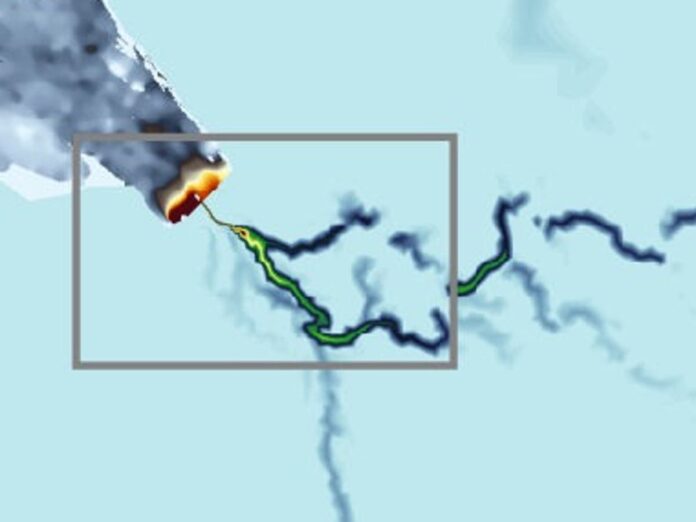A river longer than the Thames discovered beneath Antarctica may be accelerating ice loss as the climate warms, a new study warns.The 460km river affects how ice flows and melts, scientists have said.The research team found the base of the ice sheet has a more active water flow than previously believed, which makes it more vulnerable to changes in temperature.Study co-author Professor Martin Siegert, of Imperial College London, said: ‘When we first discovered lakes beneath the Antarctic ice a couple of decades ago, we thought they were isolated from each other.’Now we are starting to understand there are whole systems down there, interconnected by vast river networks, just as they might be if there weren’t thousands of metres of ice on top of them.’The region where this study is based holds enough ice to raise the sea level globally by 4.3m. How much of this ice melts, and how quickly, is linked to how slippery the base of the ice is. The newly discovered river system could strongly influence this process.’Water can appear below the ice sheets in two main ways – from melted surface water which flows down through deep crevasses, or by melting at the base, caused by the natural heat of the Earth and friction as the ice moves over land.However, the ice sheets around the north and south poles have very different characteristics.In Greenland, the ice melts a lot during summer when huge amounts of water channel down through deep crevasses called moulins.In the Antarctic, the surface does not melt enough to create moulins because the summers are still too cold.It was thought this meant that there was relatively little water at the base of the Antarctic ice sheets, but the new discovery has completely upended this.In fact, there is enough water from melting at the base alone to create rivers deep under several kilometres of ice.The newly discovered river emerges into the sea beneath a floating ice shelf – where a glacier extending out from the land is buoyant enough to begin floating on the ocean water.The fresh water from the river churns up warmer water towards the bottom of the ice shelf, which melts it from below.For the study, the researchers in the UK, Canada and Malaysia performed airborne radar surveys which allowed them to look beneath the ice.The team concentrated on a largely inaccessible and understudied area that includes ice from both the east and west Antarctic ice sheets and reaches the Weddell Sea.The team say the fact they were able to make the discovery in 2022 shows how much humanity still does not know about the Antarctic.They add that the existence of large rivers under the ice sheet needs to be taken into account when predictions are made about the consequences of climate change in the region.The region where the study is based holds enough ice to raise the sea level globally by 4.3mFor example, if summers warm enough to cause so much ice to melt that the water reaches the base of the ice sheet, it could have large effects on the river systems.It has the potential to make Antarctica more like Greenland, where ice loss is much faster.There are also possible feedback loops that would speed up ice loss.For example, if the ice started to flow faster as water accumulated at the base, then this would increase friction where the ice runs over dry land, which could increase the volume of water produced.Lead researcher Dr Christine Dow from the University of Waterloo in Ontario, Canada said: ‘From satellite measurements we know which regions of Antarctica are losing ice, and how much, but we don’t necessarily know why.’This discovery could be a missing link in our models.’We could be hugely underestimating how quickly the system will melt by not accounting for the influence of these river systems.’Only by knowing why ice is being lost can we make models and predictions of how the ice will react in the future under further global heating, and how much this could raise global sea levels.’Study co-author Dr Neil Ross, of the University of Newcastle, said: ‘Previous studies have looked at the interaction between the edges of ice sheets and ocean water to determine what melting looks like.’However, the discovery of a river that reaches hundreds of kilometres inland driving some of these processes shows that we cannot understand the ice melt fully without considering the whole system: ice sheet, ocean, and fresh water.’The team now want to gather more data about all of these mechanisms so they can apply their models to other parts of the world, in turn giving us a better understanding of how a changing Antarctica could change the planet.The findings were published in the journal Nature Geoscience.


